 Ever wondered how much it would cost to build a working, life-sized Gundam robot? At least $725 million for the parts and materials, according to an estimate published on the SciencePortal website run by the Japan Science and Technology Agency. The price tag for this giant humanoid, which would stand 18 meters (60 feet) tall and weigh 43.4 metric tons (nearly 100,000 lbs), does not include the cost of labor (this is where an extensive pool of robot slave labor comes in handy), nor does it include the cost of the infrastructure needed to support the machine once you are ready to climb aboard and take it for a walk.
Ever wondered how much it would cost to build a working, life-sized Gundam robot? At least $725 million for the parts and materials, according to an estimate published on the SciencePortal website run by the Japan Science and Technology Agency. The price tag for this giant humanoid, which would stand 18 meters (60 feet) tall and weigh 43.4 metric tons (nearly 100,000 lbs), does not include the cost of labor (this is where an extensive pool of robot slave labor comes in handy), nor does it include the cost of the infrastructure needed to support the machine once you are ready to climb aboard and take it for a walk.
Estimated cost of Gundam parts:
| ITEM |
UNIT COST |
QTY |
COST |
| Aluminum alloy (honeycomb) |
$1,800 |
43,875 |
$79,000,000 |
| (+ Metal manufacturing/processing) |
|
|
$240,000,000 |
| Main computer (IBM) |
$1,550,000 |
1 |
$1,550,000 |
| Gas turbine engines (GE) |
$52,000,000 |
7 |
$364,000,000 |
| Superconductive motors (IHI) |
$260,000 |
30 |
$7,800,000 |
| Motor drivers |
$260,000 |
30 |
$7,800,000 |
| Reducers |
$760,000 |
30 |
$22,800,000 |
| Sensors |
|
|
$910,000 |
| Cockpit |
|
|
$450,000 |
|
|
TOTAL: |
$724,310,000 |
Note that unlike in the anime, the Gundam described here would merely be able to walk -- it would not have the ability to fly or have any fancy weaponry. Also, instead of Gundanium, the robot would be covered in aluminum alloy plating.
 An IBM Blue Gene supercomputer would serve as the Gundam's computer system ($1.5 million sounds like a steal), and its movements would be driven by 30 giant 400KW motors -- 12 in the legs, 2 in the torso, 14 in the arms, and 2 in the neck. A 400KW motor is quite powerful -- by comparison, some Shinkansen bullet trains use 300KW motors. The motors alone would cost $7.8 million, but to power them would require the equivalent of 7 Apache helicopter engines (the helicopters cost an estimated $52 million each).
An IBM Blue Gene supercomputer would serve as the Gundam's computer system ($1.5 million sounds like a steal), and its movements would be driven by 30 giant 400KW motors -- 12 in the legs, 2 in the torso, 14 in the arms, and 2 in the neck. A 400KW motor is quite powerful -- by comparison, some Shinkansen bullet trains use 300KW motors. The motors alone would cost $7.8 million, but to power them would require the equivalent of 7 Apache helicopter engines (the helicopters cost an estimated $52 million each).
While $700 million is a lot of money (more than the GDP of Liberia, Grenada and a dozen or so other nations), it does not seem like so much when you compare it to the cost of other large-scale machinery. Military tanks costs around $4 to $7 million each, commercial passenger planes cost around $200 to $300 million, rockets can cost around $100 million to launch, expensive fighter jets can cost billions, and aircraft carriers cost about $5 billion.
A robot of this size and stature would face a number of physical challenges, such as the inability to walk without completely destroying the ground surface beneath its feet. When humans walk, we exert about 1.5 times our body weight of pressure on the ground (and on our feet) with each step. This poses a huge problem for a 43-ton humanoid, which would probably need to have very wide feet (to distribute the pressure over a larger area) and walk very very slowly. Dinosaurs found a way to get around, though, so giant robots probably can, too.
But perhaps the greatest challenge of all would be to find the funding for an enormous walking machine with no apparent practical or military application. With no money, this Gundam will forever remain just a dream.
[Source: SciencePortal]
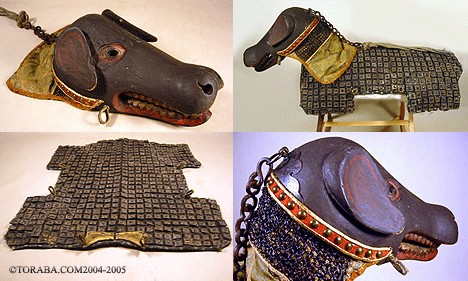
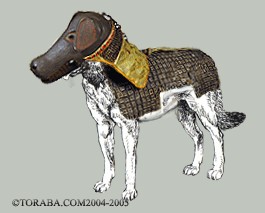

 Ever wondered how much it would cost to build a working, life-sized
Ever wondered how much it would cost to build a working, life-sized  An IBM Blue Gene supercomputer would serve as the Gundam's computer system ($1.5 million sounds like a steal), and its movements would be driven by 30 giant 400KW motors -- 12 in the legs, 2 in the torso, 14 in the arms, and 2 in the neck. A 400KW motor is quite powerful -- by comparison, some Shinkansen bullet trains use 300KW motors. The motors alone would cost $7.8 million, but to power them would require the equivalent of 7 Apache helicopter engines (the helicopters cost an estimated $52 million each).
An IBM Blue Gene supercomputer would serve as the Gundam's computer system ($1.5 million sounds like a steal), and its movements would be driven by 30 giant 400KW motors -- 12 in the legs, 2 in the torso, 14 in the arms, and 2 in the neck. A 400KW motor is quite powerful -- by comparison, some Shinkansen bullet trains use 300KW motors. The motors alone would cost $7.8 million, but to power them would require the equivalent of 7 Apache helicopter engines (the helicopters cost an estimated $52 million each). 
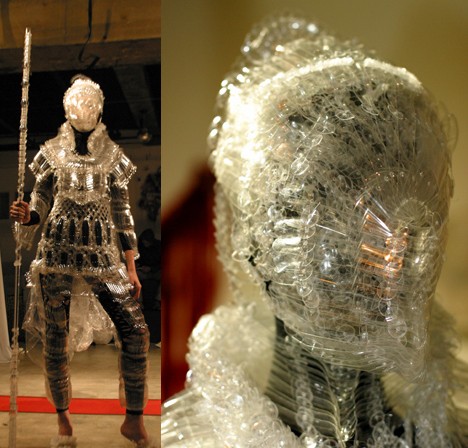

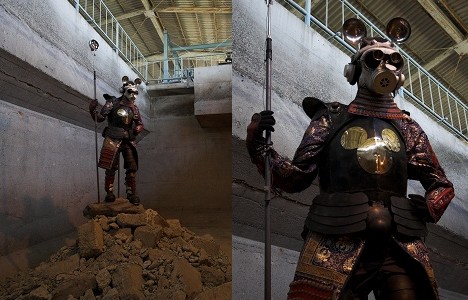
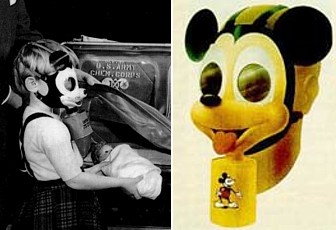 The Mickey Mouse Gas Mask was manufactured in 1942, at a time when segments of the American population, particularly those in Hawaii, feared a potential gas attack by the Japanese. With the permission of Walt Disney himself, 1,000 of the masks were produced for the US Army, who distributed them to civilians in the hope that the friendly, toy-like design would encourage children to carry them around and wear them for longer periods of time should an actual attack ever occur, thus improving their chances for survival. Apparently, this concept inspired Yanobe to create Mickey the Knight.
The Mickey Mouse Gas Mask was manufactured in 1942, at a time when segments of the American population, particularly those in Hawaii, feared a potential gas attack by the Japanese. With the permission of Walt Disney himself, 1,000 of the masks were produced for the US Army, who distributed them to civilians in the hope that the friendly, toy-like design would encourage children to carry them around and wear them for longer periods of time should an actual attack ever occur, thus improving their chances for survival. Apparently, this concept inspired Yanobe to create Mickey the Knight.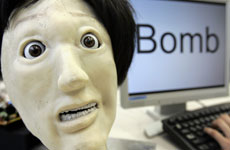 Kansei, a robot face capable of 36 expressions that vary according to emotional interpretations of words it hears, is the latest achievement to emerge from a Meiji University research lab working to develop conscious and
Kansei, a robot face capable of 36 expressions that vary according to emotional interpretations of words it hears, is the latest achievement to emerge from a Meiji University research lab working to develop conscious and 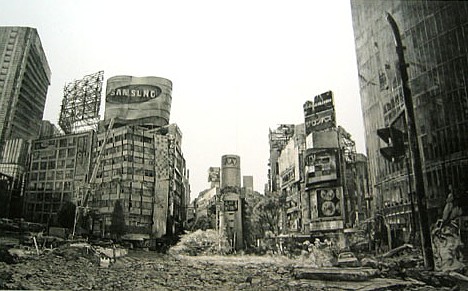
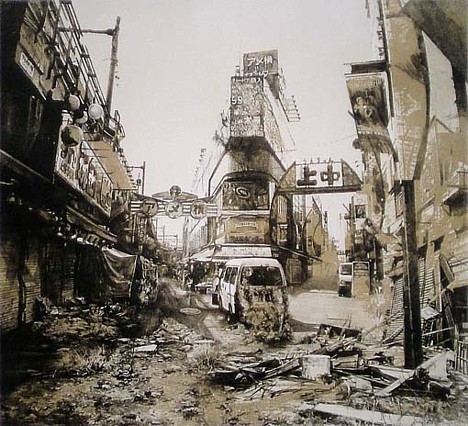



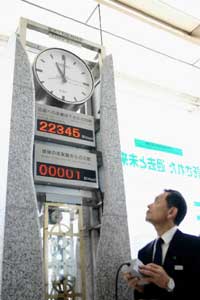 The Hiroshima Peace Memorial Museum's
The Hiroshima Peace Memorial Museum's